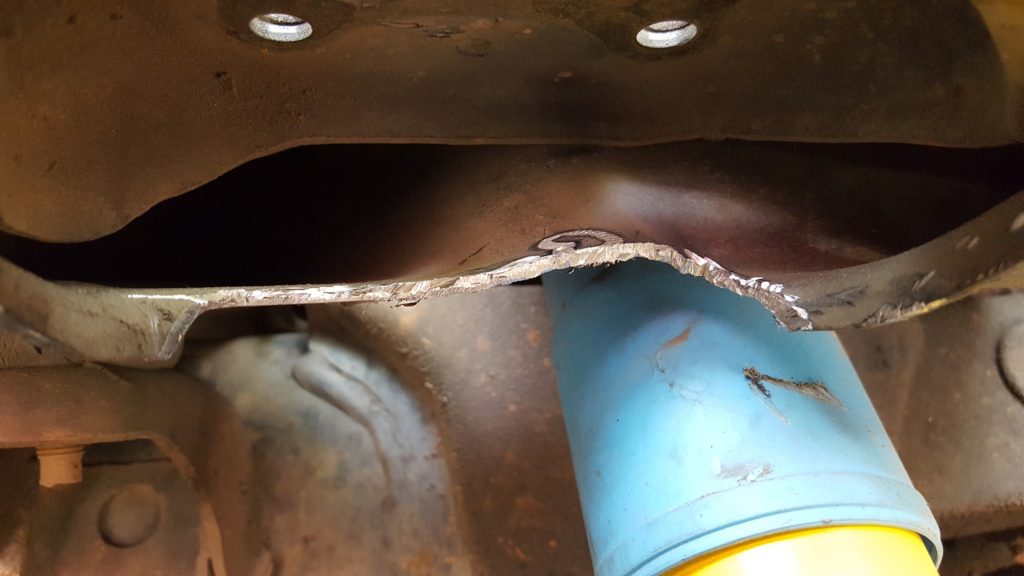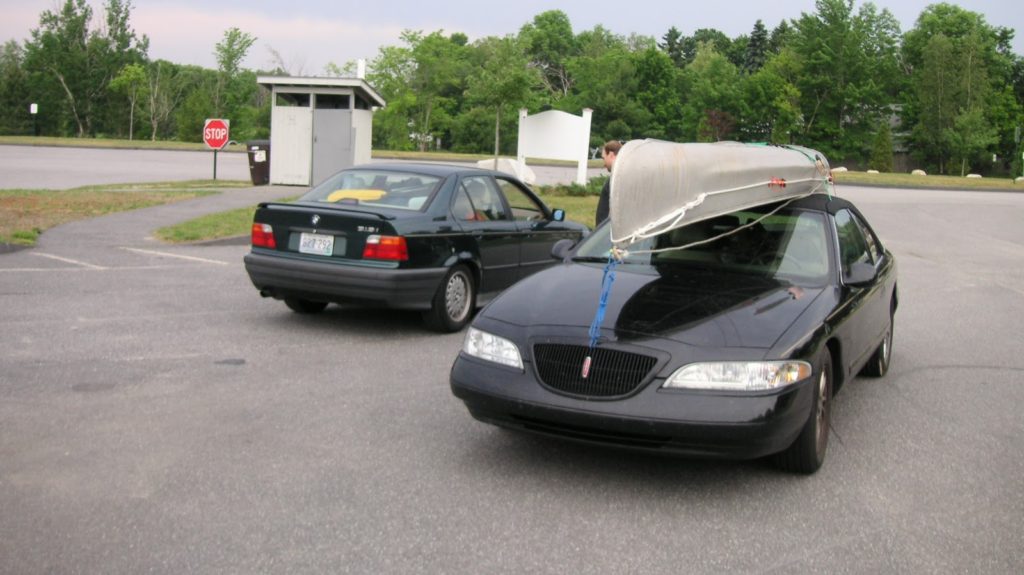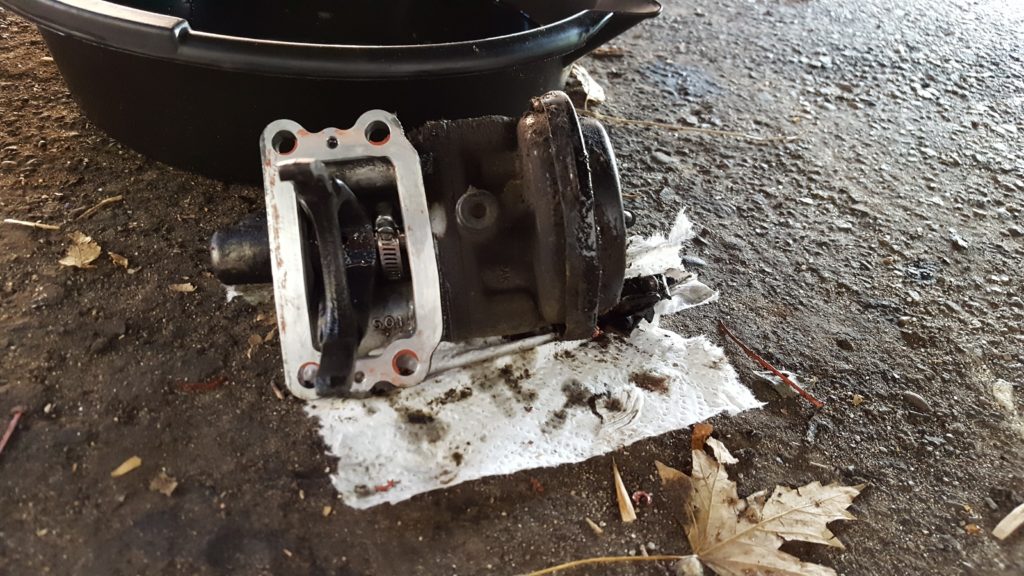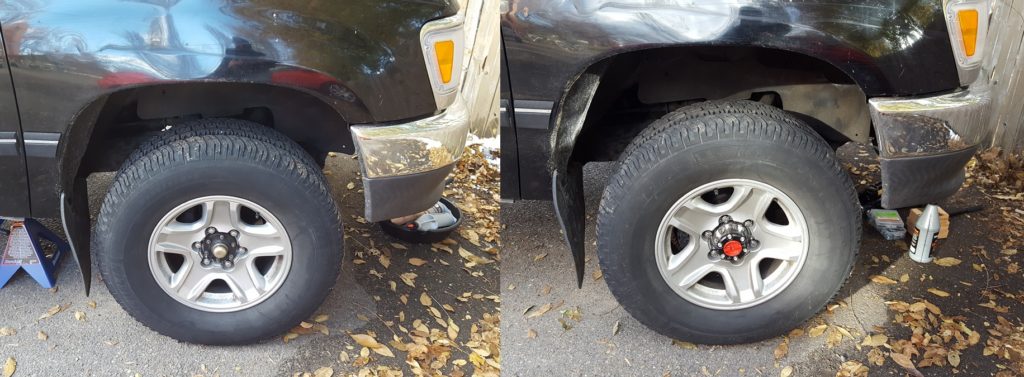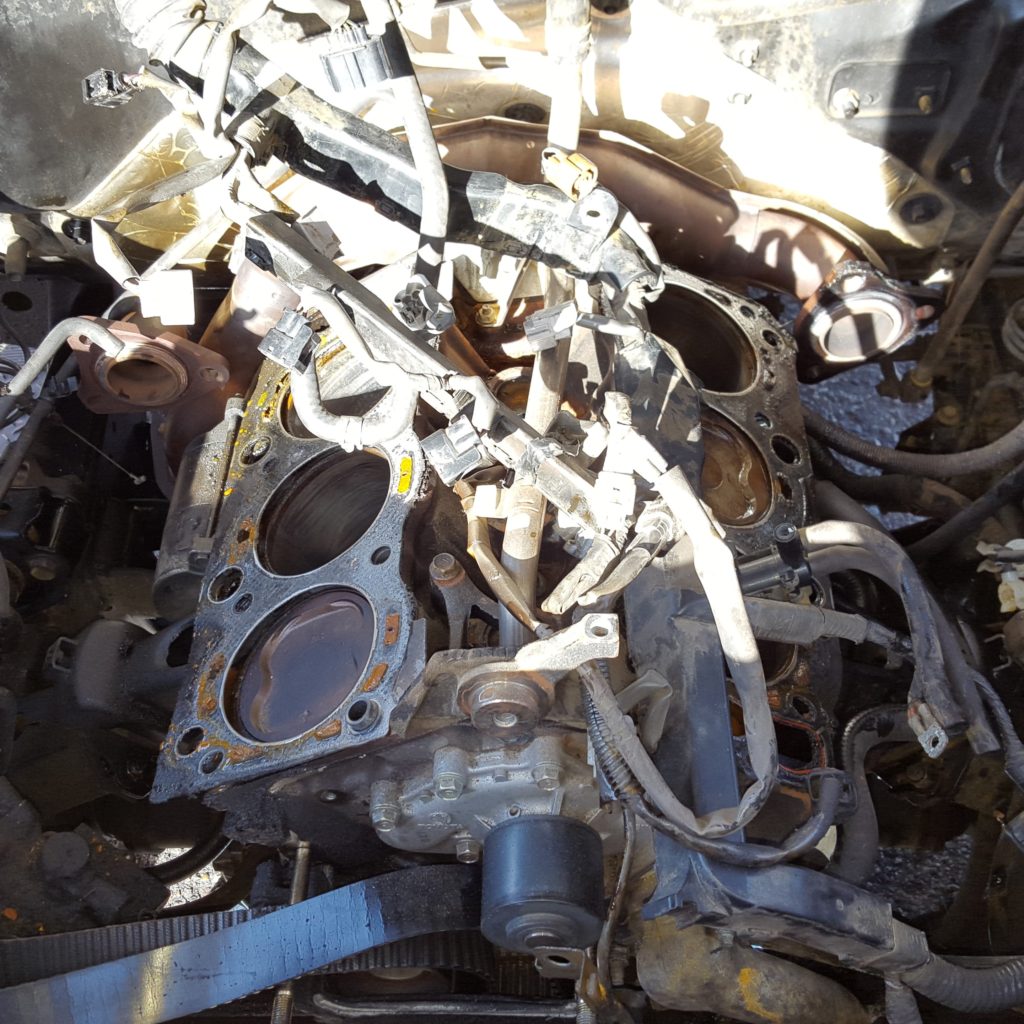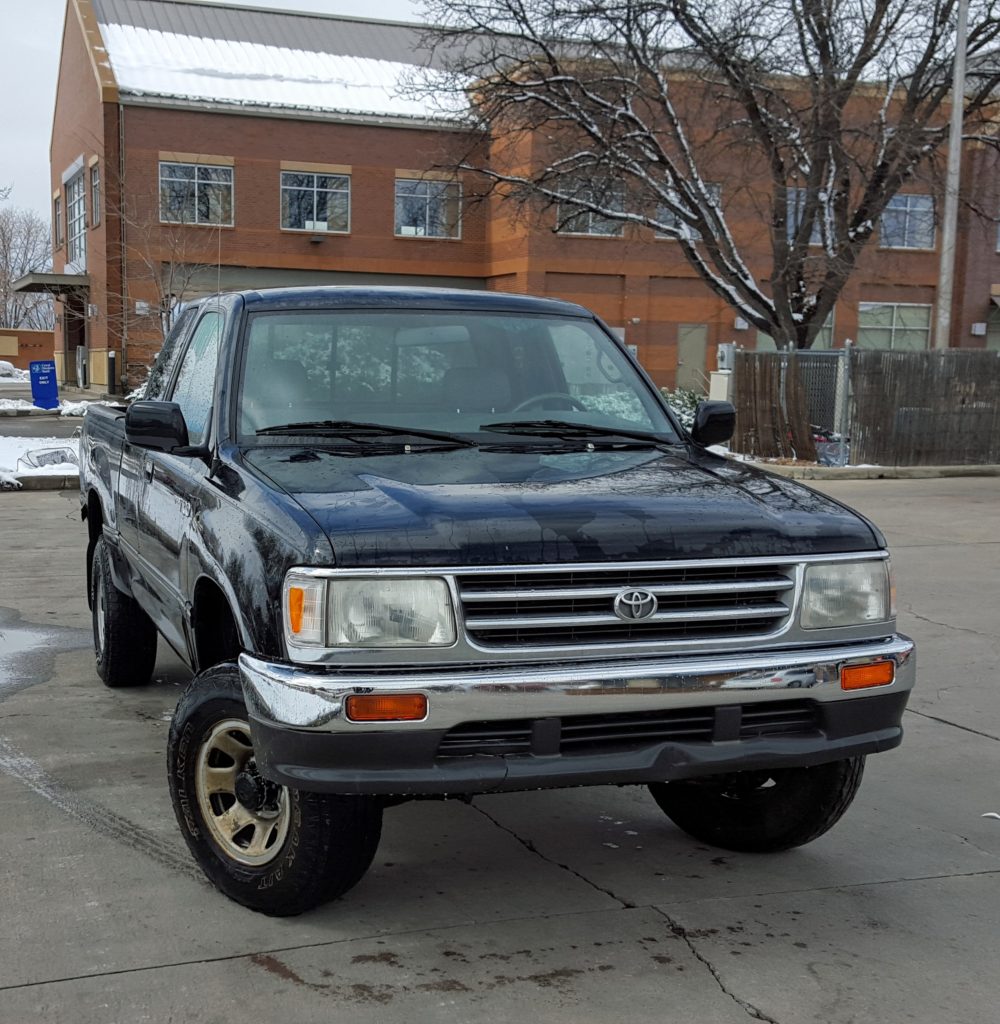I had been looking for a lightweight trailer or slide-in camper for the T100, when an older Four Wheel Camper turned up on craigslist cheap. The downside was it needed repairs to just about everything. I convinced myself I needed another project and jumped in.
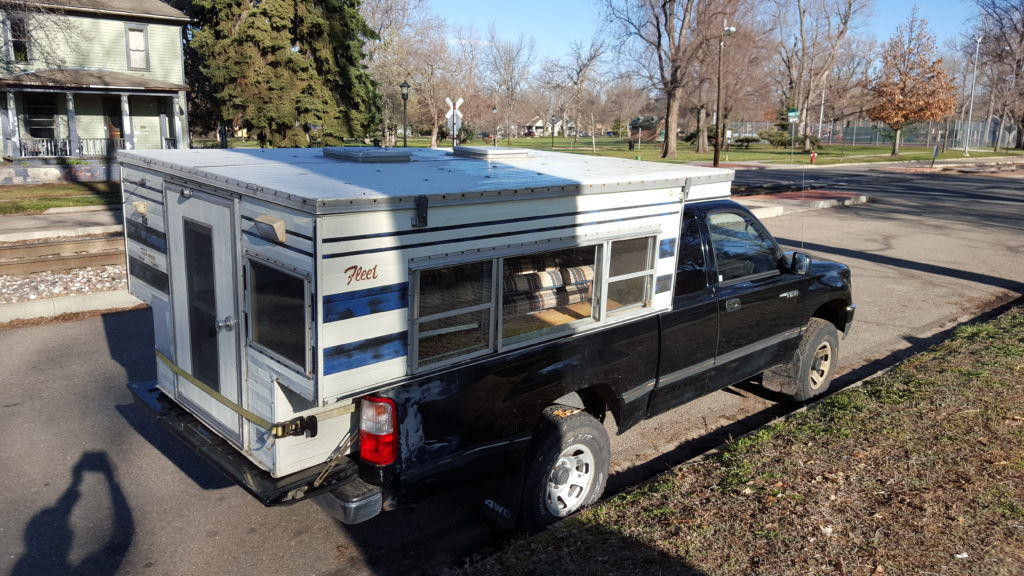
Now I have a camper
The first repairs on the list were to fix a soft floor near the door and a rotten cabover. The floor was intact enough that epoxy wood filler firmed it up, but the cabover was completely trashed. I cut that out and installed a fresh piece of plywood. Both lift panels were rotten as well, but the truck came with an intact replacement for the front panel. With that in place I had myself a somewhat functional camper shell.
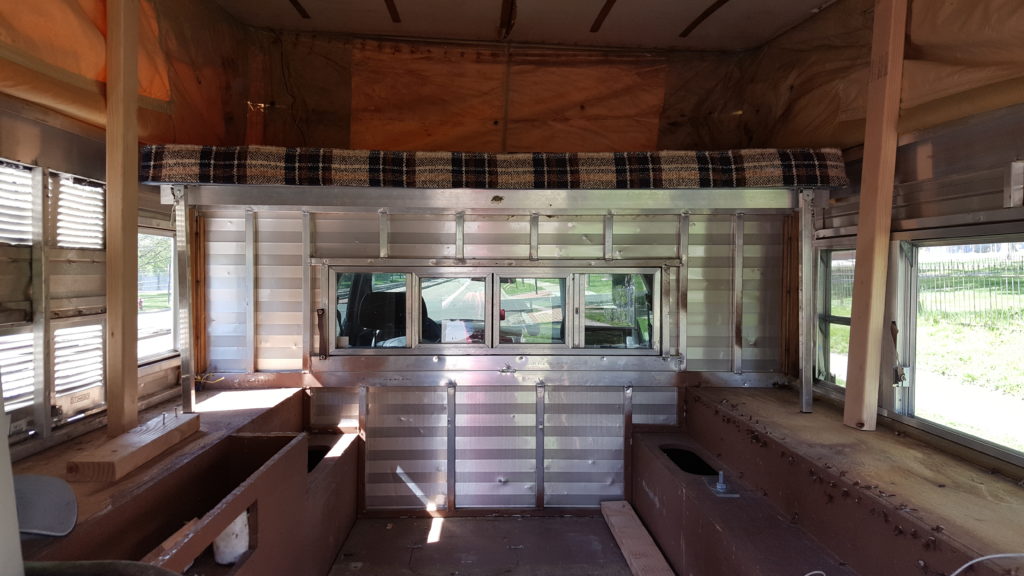
Work begins
I tore out all the paneling and insulation so I could start from scratch. The orignal camper design had storage on the left with a long bench on the right. I switched the plan to a front dinette and started building.
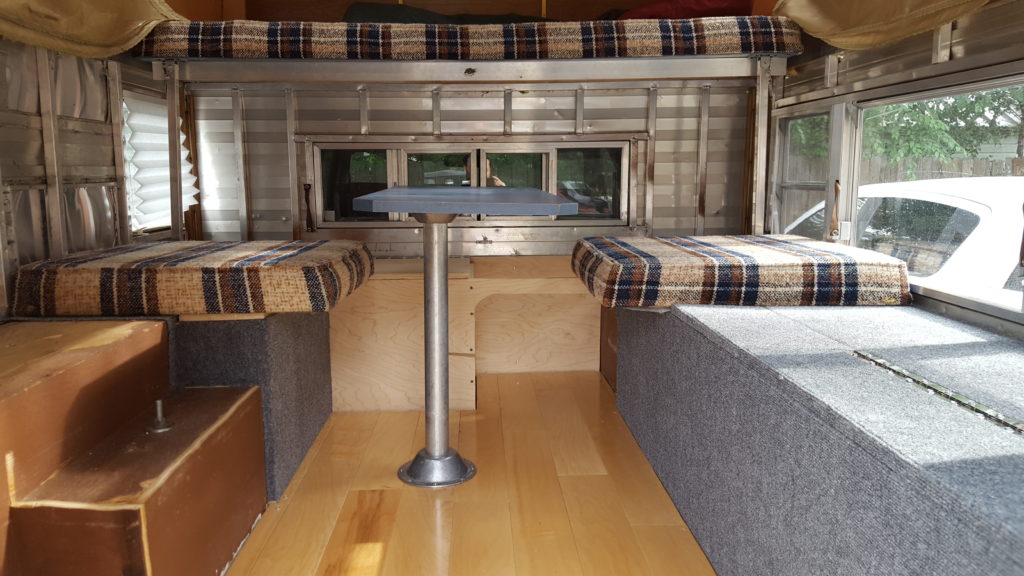
Progress
As all that was going on, I started actually getting to use the camper. I spent a surprisingly comfortable week at Burningman and several weekends in the Rockies.
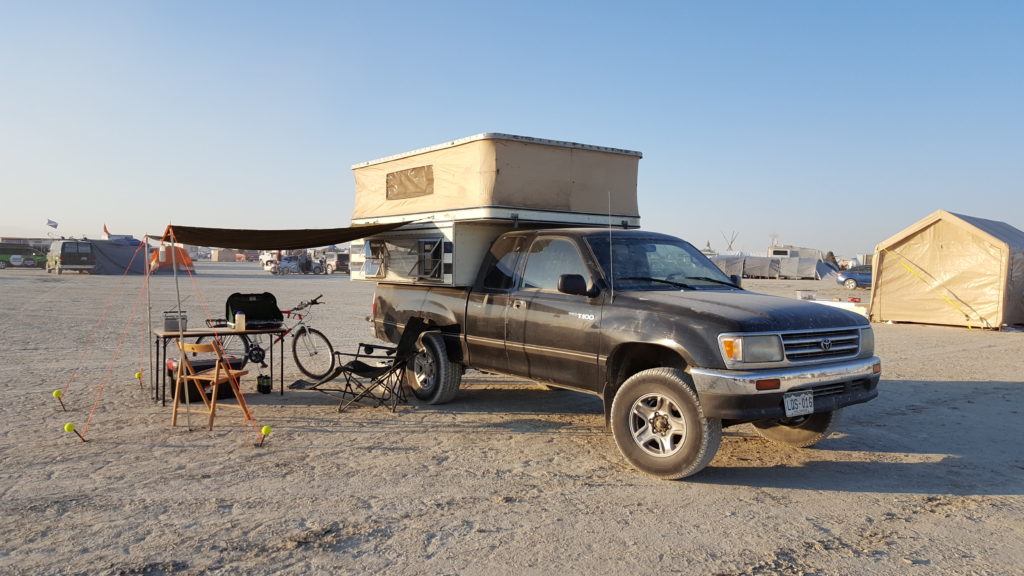
Desert life
On one of those weekend trips I ended up on an offshoot of the Switzerland trail behind Boulder. I was part way up a steep rocky hill when the 4wd cut out completely. The T100 has a vacuum actuated axle disconnect system for the front wheels when the system is in 2wd, bouncing over the rocks must have knocked a line loose or caused an actuator to fail. Whatever it was, it left me stuck backing down a trail and eventually sliding into a tree. Manual locking hubs jumped to the top of the upgrade list.
Back to the camper, next up was going to be adding a water tank and installing insulation and a heater. But before I got that far I decided the rear overhang was too much. The older Fleet campers are long enough that the tailgate has to stay down for the camper to fit in a short bed pickup. The T100 starts out with a terrible departure angle and the tailgate down only makes it worse. More importantly, I hated how it looked. I briefly debating getting a standard cab T100 with the longer bed, but instead saw a Phoenix camper on craigslist and moved on to camper #2.





